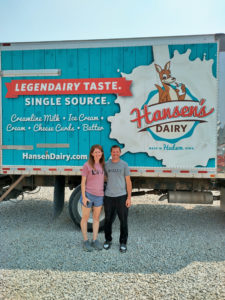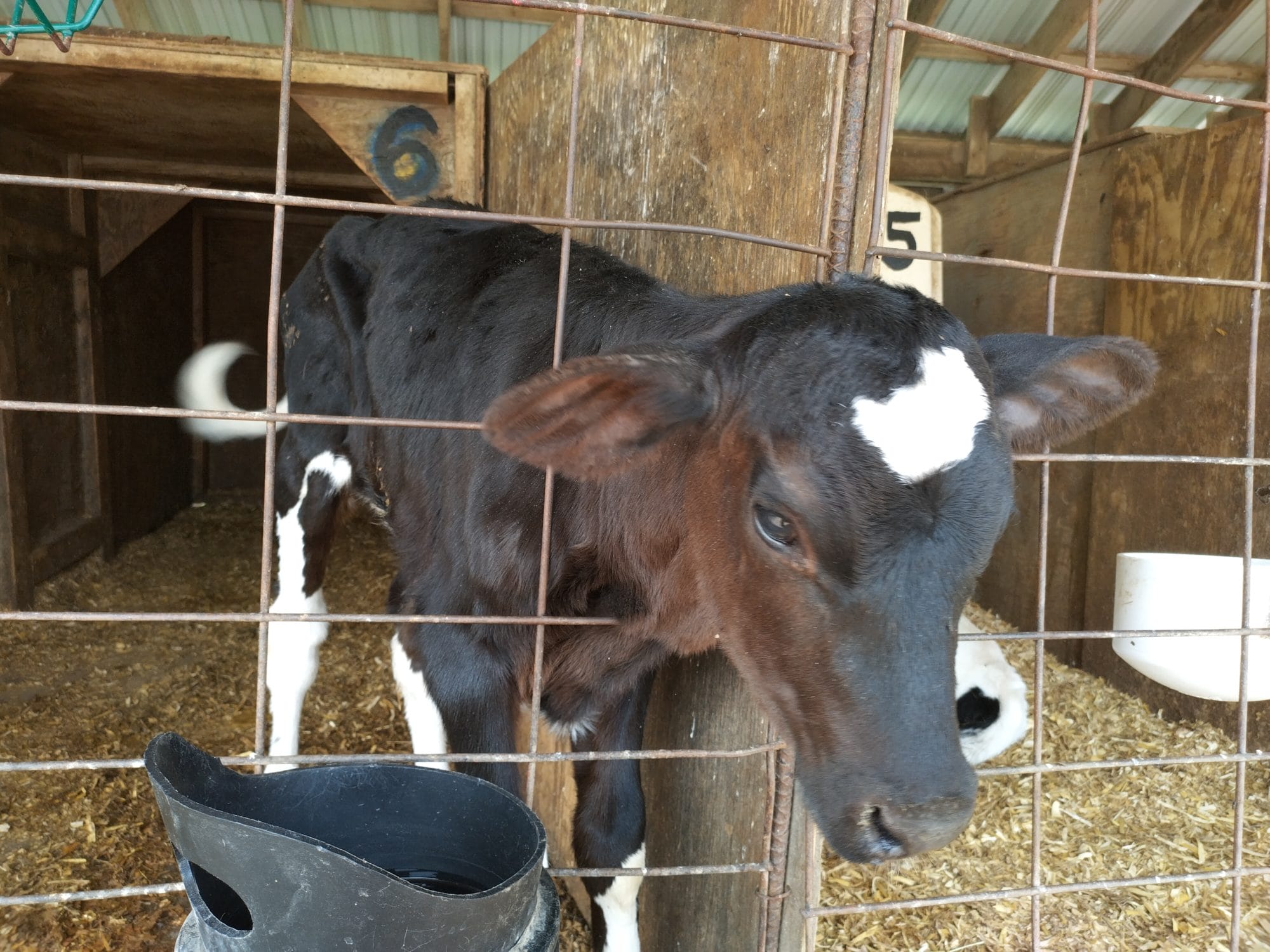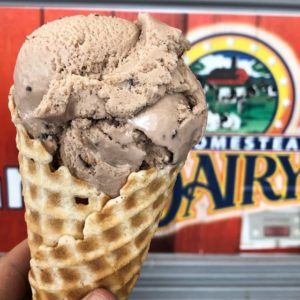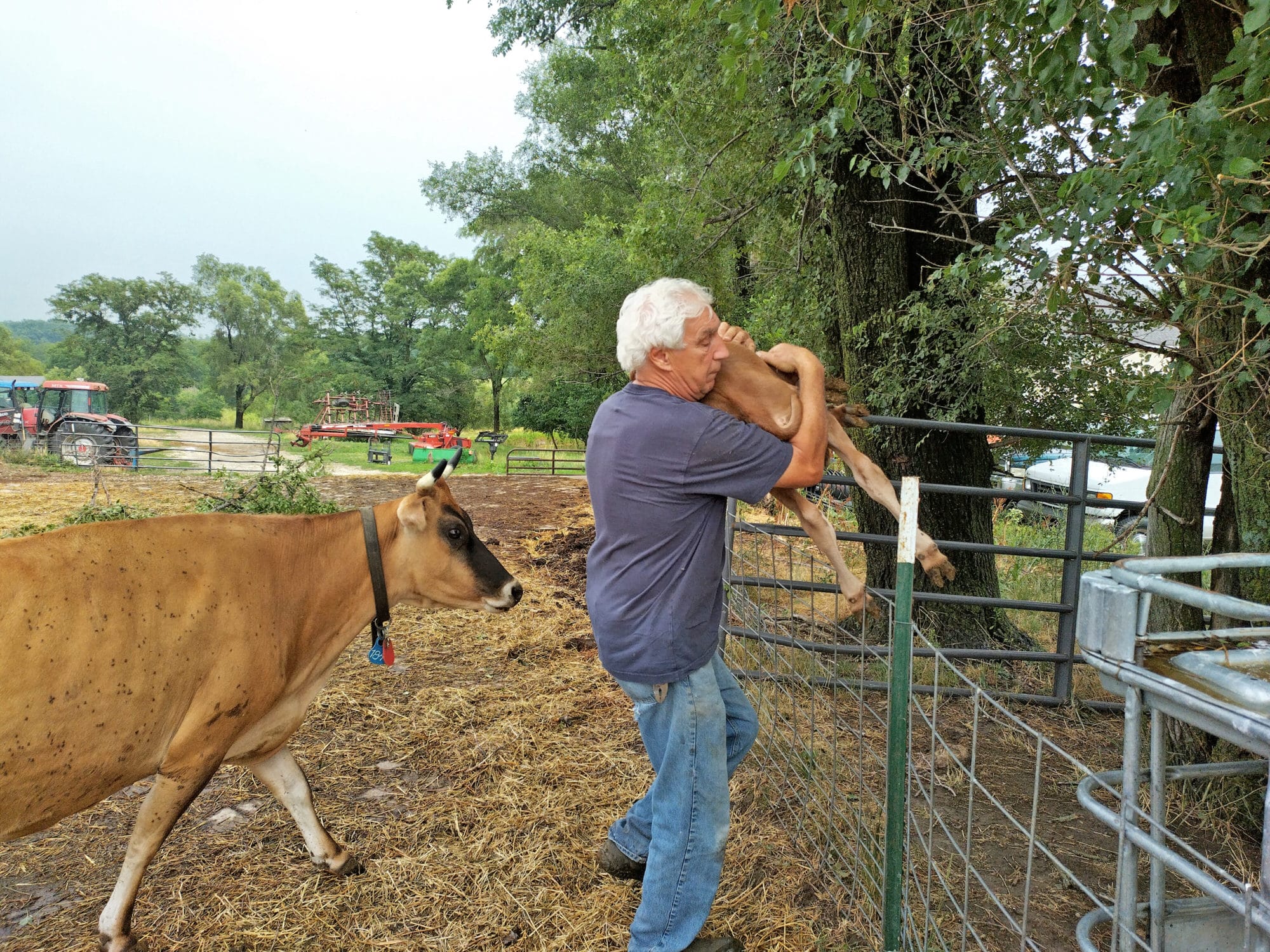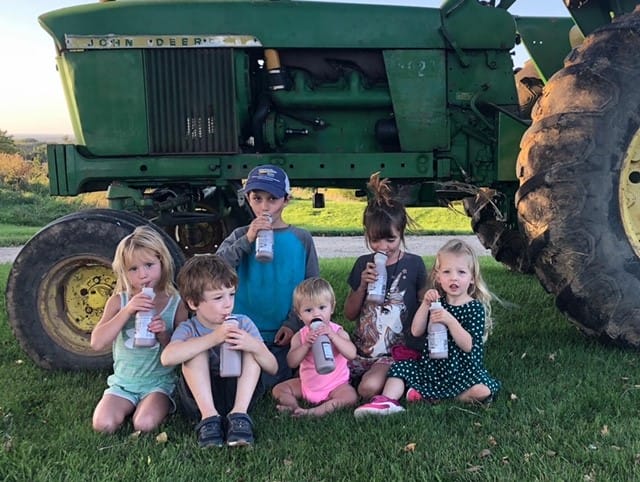A Milky Way: How Three Small-Scale Iowa Dairies Have Adapted Their Business
Facing a tough dairy market, three small-scale Iowa dairies have adapted their businesses to keep doing what they love.
Light is just beginning to spill onto the horizon when Blake Hansen goes out to the dairy barn. The cows get milked at 4 a.m., just as they have ever since he was a child growing up at Hansen’s Dairy, the farm his family has worked for 150 years outside Hudson, Iowa.
This early-morning routine is a common scene that plays out on dairy farms across Iowa and the country. What sets Blake’s morning apart from most is that after milking the cows, he can walk past the frothing bulk tank and into the on-farm creamery processing the day’s milk.
As a country singer provides the day’s soundtrack from the corner radio, milk moves through a forest of stainless-steel pipes, to be turned into ice cream. Today, it’s ice cream, but tomorrow it might be butter, or even cheese curds. While the farm has gone through generations of Hansens, this processing room is the innovation of Blake and his three brothers, Blair, Brad and Brent.
Until 2004, the Hansens sold milk to their local co-op as they always had. But then Blake’s parents, Jay and Jeanne, decided it was time to step back from the business. “My parents called me and said, ‘We’re tired. We’re selling the cows,’ and I said, ‘No you’re not, I’m coming home!’” Blake says. His brothers wanted to come back to the farm too. But the operation wasn’t big enough to support five families. To make space for everyone, they had to capture more of their milk’s value.
“It’s tough to make a living milking cows. The price of inputs is high and the price of milk is not, and it continues to decline,” Blake says. “It was either sell [the milk] to the co-op or sell it ourselves.” The family opted for the latter. Direct-marketing requires more work, but Blake says it lets them “get paid more for our hard work.” Now each brother oversees a part of the business: Blake milks and cares for the herd while Blair manages the crops and cow nutrition. Brad is in charge of creamery operations and Brent delivers the finished dairy products.
Adding Complexity
Allowing family to join in and continue farming is what motivated Tom Weighner to start WW Homestead Dairy near Waukon, Iowa, with his brother and a neighboring farmer in 2011. The two farms had been running small-scale dairies for years. Faced with the increasingly tough dairy market, however, they were finding it harder to survive. For a few years, the neighbors had kicked around the idea of joining forces to differentiate themselves with value-added dairy products, rather than scaling up or caving to industrializing pressures. Then came the Great Recession of 2007-2009.
“In 2009, a hundred-cow dairy would have lost $100,000 in equity with the price of milk that year,” Tom says. “We decided if we wanted to keep dairy farming, we’d have to try something a little different.” In 2011, the Weighners and their neighbor, Tom Walleser, pooled resources to buy a local vacant building and started their new dairy, with its focus on value-added products and community engagement.
The new dairy is doing well, but the obstacles Tom and his neighbor faced before merging aren’t unique. The difficulty of keeping a dairy farm running is evident in nationwide numbers. Since the 1940s, the number of farms with dairy cows has dropped by 97%. Many farms had some dairy cows as part of a diversified operation, but as livestock left the land and farms became more specialized dairying consolidated. Now, more than half of all dairy cows live on operations with 1,000 or more cows.
Francis Thicke, who operates a grass-fed, organic dairy in Fairfield, Iowa, and has been connected to the industry since the 1950s, has observed this decline first-hand. “Many years ago, there was smaller-scale [dairy] processing,” he says, recalling how dairies used to be commonplace. “Then the big industrial scale came in. They were competing on price and they didn’t differentiate, but you just couldn’t compete and win against that big scale.” As fewer farms produced milk, local creameries disappeared – along with the jobs they supported.
This local dairy economy is evident at WW Homestead Creamery. Located in an old factory building that sat empty for years, activity is bustling. Tanker trucks pull in while delivery trucks pull out. Through the windows in the viewing hallway that’s open for visitors, employees are seen cutting freshly made curds. These jobs – the dairy now employs more than 25 people – help strengthen Waukon’s local economy, but that doesn’t mean the work is easy.
Making value-added products and managing a creamery add unique challenges to the already hard work of running a farm. “Distribution has caused more than one headache,” Tom says. “If you’ve got perishables on a truck and it breaks down 80 miles away, that’s an issue!”
Francis knows all about the headaches more machines bring. In June, the boiler that pasteurizes the milk stopped working. Repairing it on his hands and knees, Francis sang “come on baby, light my fire,” a line from the famous The Doors song, as he used a blowtorch to jerry-rig it back to working. “Dairy farmers are used to working with cows and milking equipment,” Francis says. “But when you get into processing, it is a whole new world of equipment. Just keeping everything working is a challenge.”
Francis and his wife, Susan Thicke, have been processing the milk from their herd of Jersey cows since 1992. At the time their farm, Radiance Dairy, was the only dairy in Iowa selling milk under its own label. Since then, more dairies have tried that approach. An Iowa dairy pioneer, Francis figured out how to make an on-farm creamery work in the state. Then, in the spirit of PFI knowledge-sharing, he passed on what he learned to others.
Today, a direct line of knowledge can be traced from Radiance to Hansen’s to WW Homestead, each learning from the one that came before.
Tom is grateful for that openness. “They offered practical knowledge that the consultants just couldn’t give us,” he says of the Hansens. He doesn’t see the need for competition between any of the private-label dairies in Iowa. “There’s more than enough room for all of us.”
Specialty Price for Specialty Products
While the number of cows in the U.S. has declined by half, today’s cows are producing four times as much milk as 80 years ago. This glut in production, however, is being met with declining milk sales. The reasons for this are many: shifting consumer dining habits, lifestyle changes and the proliferation of more convenient and trendy grab-and-go drinks, among others.
Because of this decline, value-added products can be a lifeline for a dairy farm’s sales. Ice cream, butter and cheese often have stronger consumer demand than the milk from which they’re made. Radiance Dairy, Hansen’s Dairy and WW Homestead Dairy all rely on value-added products to buffer other market challenges. But it can be difficult to manage supply. “The hardest thing about it is finding a balance in the products,” says Jordan Hansen, Blake’s wife. “How do we take 3,000 gallons of milk and find the most effective blend of uses?”
Often it comes down to seasonality of sales. In the summer, Hansen’s Dairy doesn’t make much butter, she says, because the focus is on ice cream. “In the winter, ice cream sales slow down so we make a lot more butter.” Marketing the products is another major barrier. “Technically, anyone can set up a creamery and make things, but then you have to find people to buy it,” Jordan says. “That’s the challenge.”
All three dairies rely heavily on word of mouth and individual connections with customers. While priced higher than conventional dairy products, their customers are willing to pay to support local agriculture and quality products. Francis says his customer base is concerned about animal welfare, the nutritive value of his products and supporting local farms. “Nowadays, people are more interested in where their food is coming from,” he says. “It’s clear you have to have a specialty product and you have to get a specialty price for it. We’re just not even competing with the industrial system.”
Francis’ Jersey cows come to greet him as he visits their pasture. It’s about time to milk, but the cows are slow to follow. They’re more than content in the tall grass starting to take off from the recent rains. “They’ll come when they’re ready. They know the drill,” Francis says driving back up to the barn.
Sure enough, 10 minutes later the cattle are lowing as they come up the hill to the farm. They’ll be milked by the new farm manager, who does the day-to-day milking now that Francis is starting to hand the reins over to the next generation. Tonight, Francis is playing jazz trumpet in town, the audience full of people who will buy his milk tomorrow.

